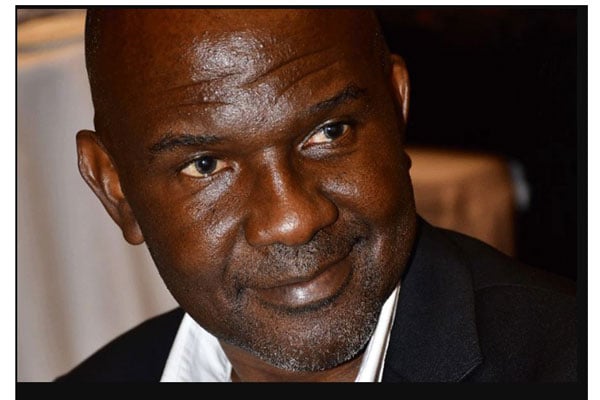Blame Nema for low public awareness on environmental impact assessments

Gilbert Musunguzi
What you need to know:
- Active participation. Uganda’s public needs to be seen to be active at any stage of EIA- related processes - amendment, suspension, authorisation, withdrawal, etc of compliance.
The low level of public awareness on Environmental Impact Assessments in Uganda portends great danger. Recently, I facilitated a community-based monitoring and evaluation system training for 64 men and women from four sub-counties of Namugongo, Kaliro Town Council, Kasokwe and Nawaikoke in Kaliro District. While most of the topics covered were quite routine on monitoring health and road sectors for transparency and accountability, the practical session aroused more interest and passionately heated discussion than usual.
I based the summative practical demonstration of the course content on a multi captioned picture that I had downloaded from the internet. The picture showed a fat bespectacled black man holding a briefcase labelled “Petroleum Minister”. He was flanked by two white men and there was a callout above his head saying, “Dear Investors, we’ve been operating here for the past 30 years..”. On the left of the trio was a beggar whose platter was being ignored as they discussed business.
On the right was a malnourished pot-bellied, semi-naked child gazing at the whitemen. The child was in front of a woman with a baby strapped on her back. With their backs against their residential shacks, poor mother and children curiusly looked at the wealthy strangers.
To the left was a signpost lebelld “Niger Delta”, and the greater background was a water body. No vegetation, save for a lousy banana plant. After members had given varied interpretations of the picture in the spirit of adult learning adage of all answers being right, I finally gave my perspective, which is the one that generated a heated debate. I explained to them that in West Africa, foreign companies signed oil extraction contracts and later the environment was degraded, local communities remained poor despite the lucrative mineral from their area.
There were environmental activists from Ogoni community who decried the degradation and were executed by Nigerian ex-president Sani Abacha, including playwright Ken Saro Wiwa. I used the story to explain to them that they have a responsibility to vet any project in their area in case it had impact, whereupon they should follow up for impact mitigation strategies if the project takes off. I explained that instead of such a desperate picture of the project to neighbouring community, some of the environmental mitigation measures could include at least some compensatory measure like agro-inputs, schools, health centres and other corporate social responsibility stunts.
When I asked whether there was such a project in their area, they all had contributions on how Kaliro Sugar Factory had brought them more harm than good. They said the factory had brought heavy vehicles that damaged roads. However much roads were worked on, the vehicles were raising too much dust causing many to contract diseases. The vehicles had caused various accidents day and night due to careless driving and some had no proper lighting.
People were no longer planting other crops, concentrating on sugar canes whose proceeds were not so high, hence there was food insecurity… They had no kind words for the factory, and couldn’t even listen to stories of job-creation and tax revenues. The story was similar in Kamuli. This discussion caused me to think about the infinitesimal level of public awareness on the subject of Environmental Impact Assessments (EIA) in Uganda (both among the urban elite and more so the rural illiterate poor) and, therefore, how this negation will be to our detriment as a country.
EIAs are an important analytic tool for identifying and potentially mitigating project risks and negative environmental and societal impacts. Their usefulness, however, depends on how they are implemented and on whether findings are used in public decision-making, given the notorious vulnerability of public-private interactions to corrupt practices. Science Direct (an online Green Research and Advocacy Journal) in their study “Deciding over nature: Corruption and environmental impact assessments” suggests that the fundamentally rationalist approach behind EIAs does not necessarily match the empirical realities of public environmental decision-making, particularly in less mature EIA systems.
Increase in the number of practitioners also brought with it the problem of amateurs. So many EIA reports are mere replicated soft copies of previous EIAs. This has a gross effect to the quality of EIAs produced.
In a study by United Nations Economic Commission for Africa on The Application of Environmental Impact Assessment in Uganda, out of the 950 projects subjected to EIA, between 1996 and 2004, only 20 were evaluated as likely to be detrimental to the environment if implemented in the proposed locations or in the form proposed and hence were not approved. Although there are some commendable EIA related restraining actions by Nema, these figures are strangely positive.
The Environment Act 1995 provides for possible public intervention in cases where development is carried out without fulfilling the EIA requirement. Given the proliferation of projects whose potential ecological, health, social, economic and cultural hazards cannot be ruled out, it is incumbent upon the public and civil society in Uganda to be actively involved in scoping, study, review and decision making stages of EIA processes.
Whereas EIA requires the responsible lead project agency to take lead in coordinating and executing the holding of EIA public hearings they cannot cut the branch on which they sit. There is deafening countrywide ignorance on EIA, yet if it was prevalent, citizen awareness and understanding of the processes would enable their effective involvement and participation during all stages, and red flags would be raised where necessary. Where projects in their localities are concerned, Uganda’s public needs to be seen to be active at any stage of EIA related processes - amendment, suspension, authorisation, withdrawal and continuous auditing of compliance.
Media, civil society, and others have a role to play in EIA, but Nema has the mandate to make it happen. Otherwise, the woman of Nawaikoke will see pollution borne-ill health, road accidents, food insecurity and poverty; but will not be able to make the logical attribution of her predicament.
Mr Musinguzi is the quality assurance manager, Uganda Debt Network. [email protected]




